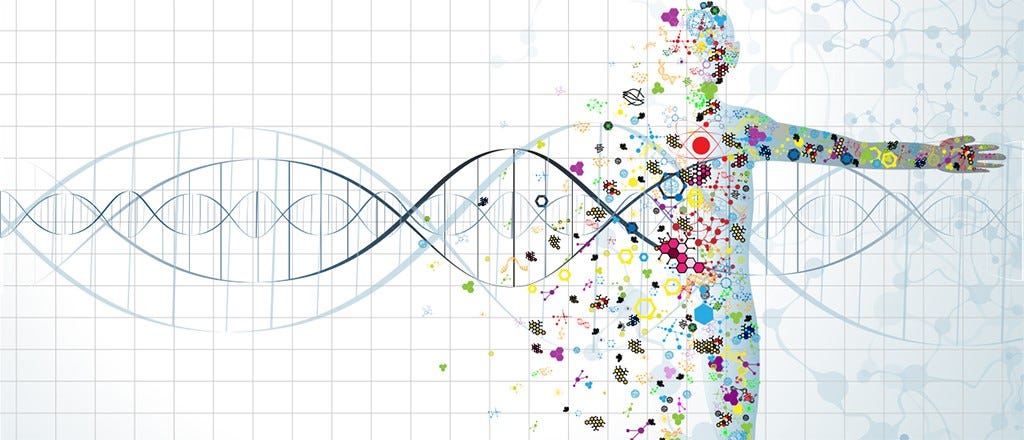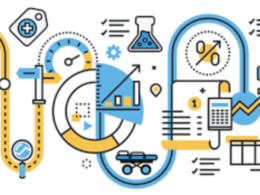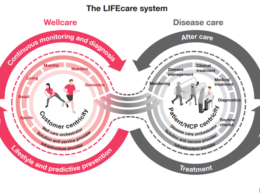This is a republication of the paper “The Future of Diagnostic Excellence”, with the title above.
Site editor:
Joaquim Cardoso MSc.
The Health Strategist — research, strategy and implementation
September 24, 2022 (sapblogs2016)
JAMA Network
Harvey V. Fineberg, MD, PhD1; Susan Song, MPH1; Tommy Wang, PhD1
September 20, 2022
This Viewpoint culminates the JAMA Viewpoint series on diagnostic excellence that included 20 scholarly and insightful articles published over the past 9 months.1
Many of these Viewpoints examined the challenges of the here and now, reducing harm from diagnostic errors, overcoming disparities in care, and enhancing timely, efficient, and relevant delivery of accurate, actionable diagnoses.
In this final Viewpoint of the series, we explore what the future of diagnostic excellence may hold (Box).
BOX: Key Points for Diagnostic Excellence
1.Many technologic initiatives to improve future diagnostic capabilities are already underway.
2.The future of diagnosis will be marked by massive, continuously acquired data, automated interpretation of data streams and data patterns, and personal reference over time of what constitutes a normal result.
3.Increasingly precise diagnoses will allow clinical comparisons across more nearly alike patients and ultimately provide a unique health profile for each individual.
4.The future of diagnosis will emphasize prediction of future health state rather than identification of current disease.
5.Diagnostic excellence begins and ends with the patient.

The quest for diagnostic excellence today encounters many obstacles.
Some originate in the life circumstances of patients, including the social determinants of health and the ability of individuals to actively engage in their health care.
Some reflect the limits of technology to probe, discern, and differentiate among clinical conditions.
Some reflect human cognitive proclivities that distort judgment.
And some reflect shortcomings in health care delivery that limit timely access and permit errors to go undetected, unexamined, and unprevented.
Against these obstacles, however, advances in basic biology, genomics, and biophysics; in understanding of pathophysiology; in engineering, nanotechnology, and computational sciences; and in health professional education, health policy, and health systems design may all contribute to progress toward diagnostic excellence.
Through the haze of uncertainty in the interplay of these forces, 5 trends that may shape the future of diagnosis can be discerned:
- Movement from symptom-prompted testing to continuous monitoring and assessment, and from within health settings to everyday living.
- Shift in reliance on individual test results to interpretation of data streams and data patterns.
- Change in the meaning of an “abnormal” test result from a deviation against a population norm to an aberrancy in an individual’s pattern of results over time.
- Increasingly refined and specific diagnostic categories in step with the advent of increasingly differentiated treatment.
- Augmentation of the goals of diagnostic excellence from the detection of disease to the preservation of wellness, and from indicative of the present disease to predictive of future state of health.

From Sporadic, Symptom-Prompted Testing to Continuous Monitoring and Assessment
The advent of continuous monitoring depends on the availability of technology that will repeatedly, unobtrusively, and accurately obtain data on relevant bioindicators, environmental exposures, and social interactions.
Continuous glucose monitors for persons with diabetes is an early example of what will be a growing family of technologies to monitor bioindicators.
Wearable detectors for toxins, air particulates, and radiation illustrate environmental exposure monitoring.
Smartphone apps can alert users to possible exposure to infection by linking location data with COVID-19 cases.
These technologies increasingly move the locus of testing from a clinical setting to everyday living.
Continuous glucose monitors for persons with diabetes is an early example of what will be a growing family of technologies to monitor bioindicators.
These technologies increasingly move the locus of testing from a clinical setting to everyday living.
New miniaturized measurement and monitoring tools, such as those that are worn, implanted, and swallowed, are undergoing active development and coming into use.
Disposable cameras approximately 1 mm in diameter can be used for gastrointestinal endoscopy and have potential applications in cardiology and urology.2
In England, a recently initiated clinical trial will test a pill-sized camera for detection of gastrointestinal cancer in 11 000 patients.3
Smart fibers for clothing are being developed to monitor patterns of breathing and heart rate, detect exposure to toxins, and measure chemical constituents of perspiration.
Disposable cameras approximately 1 mm in diameter can be used for gastrointestinal endoscopy and have potential applications in cardiology and urology.2

Interpretation of Data Patterns
These and similar technologies will generate vast amounts of data, and this puts a premium on methods to identify relevant information and detect meaningful patterns indicative of disease.
This is a multidimensional challenge because the many data streams will entail both contemporaneous patterns and patterns over time.
Incorporating multiple streams of data relevant to an individual will depend on heightened data interoperability and electronic connectivity.
Incorporating multiple streams of data relevant to an individual will depend on heightened data interoperability and electronic connectivity.
An abundance of compatible data does not automatically convert to clinically meaningful conclusions.
Finding clinical meaning in such data depends on training data sets against health outcomes over time in a representative population.
In addition, policy and regulation about privacy and use of health-related data for research, quality improvement, and protection of public health — not to mention commercial purposes — will require fresh thinking.
Finding clinical meaning in such data depends on training data sets against health outcomes over time in a representative population.
In addition, policy and regulation about privacy and use of health-related data for research, quality improvement, and protection of public health — not to mention commercial purposes — will require fresh thinking.
Machine learning techniques to analyze large amounts of data in real time are becoming more sophisticated as guides both to an optimal diagnostic process and to more accurate, specific, and complete diagnostic assessments.
For the foreseeable future, a combination of machine learning and human judgment may be optimal in reaching accurate, timely diagnoses.
Over time, machine learning algorithms are more likely to improve in diagnostic acumen than are unaided human diagnosticians.
For the foreseeable future, a combination of machine learning and human judgment may be optimal in reaching accurate, timely diagnoses.
Over time, machine learning algorithms are more likely to improve in diagnostic acumen than are unaided human diagnosticians.
With the accumulation of large amounts of individual data and pattern detection increasingly automated, laypersons may learn about their state of health from computerized prompts and feedback.
What are beginning today as health monitoring apps may seem remarkably primitive over time, both an opportunity and a challenge for clinical medicine.

Definition of an Abnormal Result
In reporting the results of a clinical chemistry test panel, analyte levels that fall outside the 95% range of results in well individuals may be tagged as “out of range,” that is, abnormal.
These results may signal a potential underlying condition or, at minimum, represent a sign that should be further investigated.
As more health-related data are collected in a more continuous manner, individual results at a moment in time will have a comparison baseline of that individual’s previous results.
A more individualized definition of abnormal — that is, a pattern of results that warrants investigation — may follow a small deviation from an individual’s own previous levels, even if still “within normal limits” of a population comparison.
Self-referenced norms may prove to be both more sensitive (eg, when a small increase should trigger investigation, even if the higher result is within the population norm) and more specific (when a consistent result over time just outside the population norm is not a cause for concern).

Increasingly Precise Diagnoses
The movement toward precision medicine combines increasingly individualized diagnoses with correspondingly specific interventions.
Genomic biomarker testing is already a part of routine care for patients with breast cancer, colorectal cancer, and non–small cell lung cancer.
By differentiating patients with and without certain biomarkers, the aim is to target treatment more effectively.
Beyond ERBB2 testing, many patients with breast cancer may receive a suite of 21 genomic tests that help determine risk of recurrence and whether chemotherapy may be advisable.4
Genomic biomarker testing is already a part of routine care for patients with breast cancer, colorectal cancer, and non–small cell lung cancer.
Beyond ERBB2 testing, many patients with breast cancer may receive a suite of 21 genomic tests that help determine risk of recurrence and whether chemotherapy may be advisable.4
From a diagnostic excellence vantage point, the drive to precision will classify patients into increasingly differentiated and refined categories of disease.
These refined classes and characteristics will enable clinical comparisons across more nearly alike groups of patients.
The ultimate diagnostic profile will be unique to an individual, combining genetic, morphologic, and stochastic elements into a disease category of one, the condition within the biologic environs of that individual’s body.
The movement to precision medicine makes comparisons across patients more distinctly relevant and lends scientific meaning to the familiar declaration that every patient is unique.
The ultimate diagnostic profile will be unique to an individual, combining genetic, morphologic, and stochastic elements into a disease category of one, the condition within the biologic environs of that individual’s body.
Whether the logical extreme of 1 person, 1 diagnosis has value depends on the availability of treatment that targets the unique diagnosis-in-individual.
Increasing specificity of successful treatment will go hand in hand with increasingly individualized diagnostic classification.
For example, according to a recent preliminary report, patients with locally advanced, DNA mismatch repair deficient colorectal cancer have been apparently cured by treatment with an anti–PD-1 monoclonal antibody.5
Increasing specificity of successful treatment will go hand in hand with increasingly individualized diagnostic classification. …
… according to a recent preliminary report, patients with locally advanced, DNA mismatch repair deficient colorectal cancer have been apparently cured by treatment with an anti–PD-1 monoclonal antibody.5

The Aims of Diagnosis
Today, clinicians think of diagnosis mainly in terms of the detection and classification of disease.
Over time, increased understanding of the genomic, proteomic, metabolomic, and microbiomic underpinnings of human biology will produce greater understanding of the etiology and progression of biologic function from the state of health to the state of disease.
As understanding of the precursors of disease grow more detailed and revealing, the art and science of diagnosis enlarge from the detection of present disease to the prediction of future disease.
Over time, increased understanding of the genomic, proteomic, metabolomic, and microbiomic underpinnings of human biology will produce greater understanding of the etiology and progression of biologic function from the state of health to the state of disease.
Put in equivalent, positive terms, medical diagnosis moves from characterizing the current state of health to predicting the future state of health.
Then interventions may be designed to enhance, maintain, and as needed, restore health.
Put in equivalent, positive terms, medical diagnosis moves from characterizing the current state of health to predicting the future state of health.
The future projection of health will likely need to consider stochastic or chance events along with genetic and environmental (including social, habitual, and nutritional) determinants of health and disease.
It is difficult to imagine a better-controlled genomic and environmental exposure than the 2 kidneys in a single person. Yet, in a series of more than 2300 cases, the frequency of cancer arising in the contralateral kidney after cancer in the first kidney was only 1.2%.6
The determinants of health and disease will unfold over many decades, perhaps centuries, and the aims of diagnosis as a characterization of health and predictor of future health will evolve alongside this deepening scientific understanding.
The determinants of health and disease will unfold over many decades, perhaps centuries, and the aims of diagnosis as a characterization of health and predictor of future health will evolve alongside this deepening scientific understanding.
In the initial Viewpoint of this series, Maitra and Verghese7 cautioned that no biomedical label can encompass the patient’s lived experience.
Whether diagnostic excellence comes to depict a state and future course of health or to describe a current category of disease, physicians and other clinicians will always do well to focus on the lived experience.
The aims of diagnostic excellence begin and end with the patient.
The aims of diagnostic excellence begin and end with the patient.
References and additional information
See the original publication
About the authors & affiliations:
Harvey V. Fineberg, MD, PhD 1;
Susan Song, MPH 1;
Tommy Wang, PhD 1
1 Gordon and Betty Moore Foundation, Palo Alto, California
Additional Contributions:
We thank Karen Cosby, MD, and Daniel Yang, MD (both with the Gordon and Betty Moore Foundation), for helpful comments. They did not receive compensation.
Originally published at: https://jamanetwork.com












